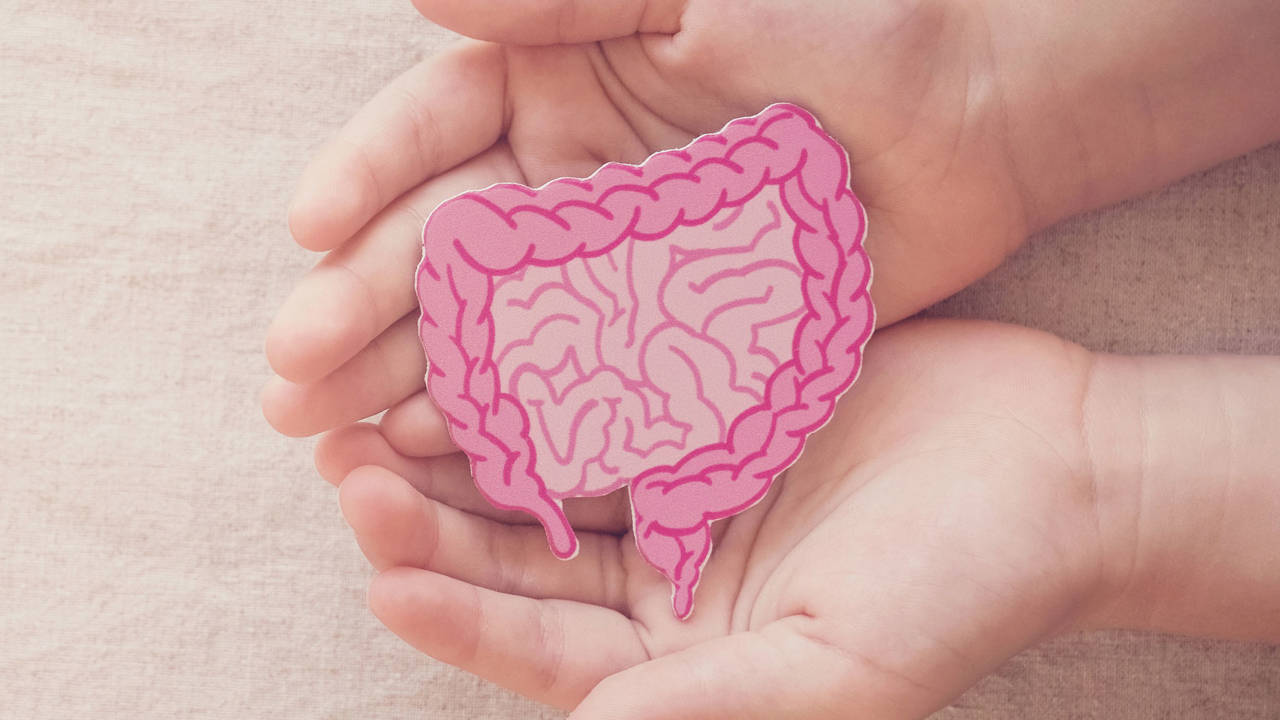Postbiotics explain the anti-inflammatory effect of a healthy microbiota. You can learn to take care of the production of these compounds through proper nutrition.

- Differences between postbiotics, probiotics, prebiotics and symbiotic
- What are postbiotics and what types are there?
- What functions do postbiotics have?
- Postbiotics and diet
We often talk about the gut microbiota and its benefits, but not so much about what gut bacteria actually do in the body. The truth is that they do not stop working, producing different substances with healthy properties and even produce positive effects when they are no longer alive. This group of compounds are called postbiotics.
DIFFERENCES BETWEEN POSTBIOTICS, PROBIOTICS, PREBIOTICS AND SYNBIOTICS
Before entering the world of postbiotics, it is convenient to differentiate the meanings of this group of very similar words:
- Probiotics are live bacteria. They are found in fermented foods and in the form of supplements.
- Prebiotics are substances, essentially fibers, that feed them and promote their healthy development. They are found in plant foods.
- Synbiotics are the mixture of probiotics and prebiotics that can occur naturally in foods or can be used to create a supplement.
- Postbiotics, less known, are inactive bacteria, parts of them or the substances they produce (metabolites), and without which the function of the microbiota cannot be understood.
WHAT ARE POSTBIOTICS AND WHAT TYPES ARE THERE?
A balanced diet with sufficient plant foods promotes the production of postbiotics, which play a vital role in immunity, improve the integrity of the intestinal wall and contribute to a healthy digestive microbiota. There are several types of postbiotics and each has a range of properties.
Exopolysaccharides are produced by bacteria and are attracting the interest of scientists for their ability to modulate the immune response, keep blood pressure under control and stabilize blood glucose levels. Exopolysaccharides of the type of beta-glucans, such as those produced by the yeast Saccharomyces cerevisiae, can improve the absorption of provitamin A and, applied as part of a cream, can improve atopic dermatitis.
Enzymes are produced by bacteria to defend themselves against free radicals. Two strains of L. fermentum, for example, produce large amounts of glutathione peroxidase, which could reduce intestinal inflammation.
Some vitamins can be produced by gut bacteria. For example, L. helveticus produces folic acid, essential for the development of the nervous system, and some strains of E. coli synthesize vitamin K, necessary for blood clotting. L. acidophilus increases vitamin B12 levels. However, bacteria do not produce enough of these nutrients to meet the body’s needs, so they must also be obtained from food. Folic acid is found in vegetables, legumes and oranges, for example. B12 is found in animal foods, so vegetarians and vegans need to supplement.
Essential amino acids such as tryptophan can also be synthesized by intestinal bacteria, which then metabolize it again and transform it into other substances, such as indoles, which arrive with the blood to the brain where they participate in the creation of new neurons.
Derivatives of polyphenols appear when they are digested by certain intestinal bacteria:
- Urolithin, which is synthesized by bacteria from the ellagitannins of some fruits and nuts, helps control weight and improves the state of cellular mitochondria and, with it, the functioning of all organs and physiological systems.
- Equol is produced by bacteria by metabolizing daidzein, a type of isoflavone found in soybeans. This substance explains the beneficial effects of isoflavone supplements against menopausal symptoms. In addition, it can improve arterial flexibility and bone density.
- 8-Prenylnaringenin, on the other hand, appears when the microbiota metabolizes a compound, isoxanthohumol, found in hops and beer. This postbiotic helps preserve bone density and muscle volume in women.
- Bacteriocins, such as phenylacetic acid, which appear when fermenting plant polyphenols, control the multiplication of potentially pathogenic bacteria, such as E. coli.
WHAT FUNCTIONS DO POSTBIOTICS HAVE?
Postbiotics produce beneficial effects on organs and systems that support health.
- Modulate immunity: Postbiotics such as butyrate stimulate the production of T cells, which regulate the intensity of the immune response. They can prevent both autoimmune diseases and infections as well as allergies. Fragments of bacterial walls and supernatants increase anti-inflammatory cytokines.
- Reduce digestive discomfort: Short-chain fatty acids can improve symptoms of intestinal inflammation. Studies have used butyrate to reduce the discomfort of Crohn’s disease, inflammatory bowel disease, ulcerative colitis, and diarrhea.
- Control hunger: Some studies indicate that short-chain fatty acids reduce hunger signals and, in this way, can help in weight control.
- Help control glucose: Blood sugar spikes are reduced with the help of butyrate and other postbiotics. Thus, they contribute to the prevention of insulin resistance and type 2 diabetes.
- Prevent heart disease: In animal studies, butyrate lowers blood pressure and inhibits the expression of genes involved in cholesterol production. High blood pressure and high cholesterol are risk factors for heart attacks and strokes.
- Anticancer effect: As inflammation is linked to carcinogenesis, any agent with anti-inflammatory properties has anticancer potential. Propionate, a post-biotic short-chain fatty acid, has shown its ability to induce the death of stomach cancer cells. Other postbiotics, such as L. rhamsnosus supernatants, also possess anticancer activity.
- Improve physical condition: Specific postbiotics such as propionate, produced by the genus Veillonella, could increase physical performance.
POSTBIOTICS AND DIET
The diet that promotes a healthy microbiota and, therefore, the generation of postbiotics, includes several daily servings of foods rich in soluble fiber and fermented foods.
- Resistant starch behaves like a soluble fiber, the best food for bacteria. It is found in abundance in lightly cooked oats and legumes. Also in rice, potatoes, sweet potatoes and wheat pasta when they have been cooked and cooled for several hours.
- Inulin is a type of fiber that is very beneficial for the microbiota. It is found in chicory roots, garlic, onions, leeks, artichokes, asparagus, dandelion leaves and bananas that are greener than ripe. All vegetables contain other soluble fibers that are prebiotic.
- Beta-glucan is also a highly fermentable soluble fiber. You’ll find it in oats, barley, rye, corn, mushrooms, algae and brewer’s yeast.
- Pectin from fruits such as apple, tangerine, orange, quince or peach, among others, is an excellent soluble fiber for the microbiota.
- Fermented foods provide both live bacteria (probiotics) and inanimate bacteria and metabolites. The most common fermented foods are yogurt, kefir, sauerkraut, kimchi, miso, and kombucha. Foods that have been fermented and then baked or pasteurized, such as bread, vinegar, cocoa or black tea, no longer contain live bacteria, but they do contain cellular debris and metabolites that exert a beneficial action. For example, the consumption of sauerkraut, even if pasteurized, is related to good intestinal health.
AN IDEAL POSTBIOTIC MENU
The one we propose below is a good example of a menu to promote the generation of postbiotics.
Breakfast:
- Overnight oat flakes (soaked overnight) with apple, cashews and soy milk. A green tea.
Lunch:
- Country salad with steamed and cooled potato cubes, onion, red and green peppers, cloudy vinegar and extra virgin olive oil.
- Chickpea stew with artichokes and chopped almonds, garlic and parsley.
- A peach with a glass of kefir.
Dinner:
- Tofu sautéed with asparagus, broccoli, carrot slices and mushrooms, seasoned with miso sauce before serving.
- A glass of fresh kombucha and a plate of strawberries.








